Here 13 orthopedic surgeons and one neurosurgeon share their thoughts on how innovation is still possible in the orthopedics field.
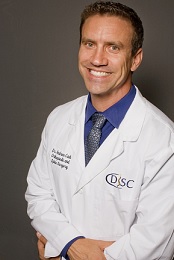 Andrew Cash, MD, Desert Institute of Spine Care (Las Vegas): The most inviting innovative opportunity in spine surgery is biological prevention and restoration of degenerative processes. Millions worldwide suffer the effects of physiologic and super-physiologic (traumatic) degeneration of the discs, facets and sacroiliac joints. Biologic technology to restore aging joints in the spine and regenerate cartilaginous insults has paramount value for the elderly, athletic and post-traumatic. Applications extend to the appendicular skeleton as much as the axial. The arthritic cascade reveals multiple opportunities for correction. The preliminary wave of promising data has been succeeded annually by increasingly more investigators with capitalistic support. As with any advancement, research is the foundation.
Andrew Cash, MD, Desert Institute of Spine Care (Las Vegas): The most inviting innovative opportunity in spine surgery is biological prevention and restoration of degenerative processes. Millions worldwide suffer the effects of physiologic and super-physiologic (traumatic) degeneration of the discs, facets and sacroiliac joints. Biologic technology to restore aging joints in the spine and regenerate cartilaginous insults has paramount value for the elderly, athletic and post-traumatic. Applications extend to the appendicular skeleton as much as the axial. The arthritic cascade reveals multiple opportunities for correction. The preliminary wave of promising data has been succeeded annually by increasingly more investigators with capitalistic support. As with any advancement, research is the foundation.
The most inviting innovative opportunity in spine surgery is biological prevention and restoration of degenerative processes. Millions worldwide suffer the effects of physiologic and super-physiologic (traumatic) degeneration of the discs, facets and sacroiliac joints. Biologic technology to restore aging joints in the spine and regenerate cartilaginous insults has paramount value for the elderly, athletic and post-traumatic. Applications extend to the appendicular skeleton as much as the axial. The arthritic cascade reveals multiple opportunities for correction. The preliminary wave of promising data has been succeeded annually by increasingly more investigators with capitalistic support. As with any advancement, research is the foundation.
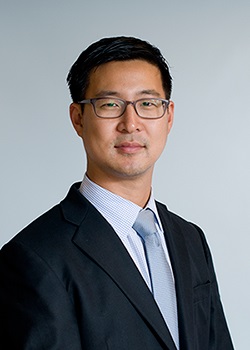 Thomas Cha, MD, MBA, Massachusetts General Hospital (Boston): The administrative burden when dealing with third party payers is ever-increasing. The payers' policies regarding the medical necessity of a treatment determine treatment options that physicians offer their patients. It's tough to quantify the amount of time spent on the phone or filling out forms but the process is aggravating and requires time that could be better spent on more meaningful tasks.
Thomas Cha, MD, MBA, Massachusetts General Hospital (Boston): The administrative burden when dealing with third party payers is ever-increasing. The payers' policies regarding the medical necessity of a treatment determine treatment options that physicians offer their patients. It's tough to quantify the amount of time spent on the phone or filling out forms but the process is aggravating and requires time that could be better spent on more meaningful tasks.
The challenge for orthopedic surgeons in 2015 will be for societies and surgeons to work on consensus clinical practice guidelines based on outcomes research, specifically cost effectiveness studies. This has already been started, but the next step is to work with third party payers to align their policies with these guidelines. An example of this is the procedure order entry (PrOE) project we are participating with third party payers in Massachusetts to address the pre-approval process for lumbar spine surgery.
ProE is powered by QPID Health's Q-Guide product. We've been using the tool for about a year and a half now and it has helped lessen the documentation burden significantly.
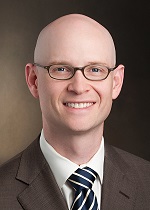 Bennett Grimm, MD, Resurgens Orthopaedics (Atlanta): Industry relationships with surgeons should continue to be robust and will present significant opportunities to advance research and development in the field of spine surgery.
Bennett Grimm, MD, Resurgens Orthopaedics (Atlanta): Industry relationships with surgeons should continue to be robust and will present significant opportunities to advance research and development in the field of spine surgery.
Biologics will play more and more of a role in spine surgery especially stem cell-based therapies that promote fusion and more forward looking those which stimulate intervertebral disc regeneration. Three-dimensional printed biologic intervertebral discs impregnated with stem cells which spine surgeons will implant are not a distant reality.
The Holy Grail in spine care remains the elusive cure for chronic low back pain, which spine surgeons will undoubtedly play a key role in developing over the next several decades. This development will come concomitantly with improved understanding of the likely multifactorial pain generators that cause low back pain.
Finally, innovative surgeons along with radiologists will have opportunities to advance imaging modalities and procedures that accurately identify and map the generators of axial neck and back pain.
 Joanne Halbrecht, MD, Boulder (Colo.) Institute for Sports Medicine: The innovation which has had the greatest impact on the treatment of shoulder, neck and back pain in my practice is a variable elasticity garment: the Alignmed ® Posture Shirt. The surgical treatment of pathology entails risk, from infection and damage to nerves and blood vessels to blood clot; the complications can be devastating. The Posture Shirt has contributed to the near eradication of surgery in my practice for the treatment of shoulder bursitis. The strategically located variable elastic NeuroBands reproduce kinesiotaping techniques which are widely utilized in physical therapy to relax certain muscles and stimulate others. The NeuroBands gently pull the shoulders back, correct posture and increase the space for the bursa in the shoulder as well as align the neck and back. This result is also achieved through the SpinalQ which has external adjustable straps, provides customizable posture correction and is covered by Medicare. In addition, the AlignMe bra is beneficial for lightweight correction and sports use. In many cases, the patient notes immediate pain relief when a Posture Shirt is donned.
Joanne Halbrecht, MD, Boulder (Colo.) Institute for Sports Medicine: The innovation which has had the greatest impact on the treatment of shoulder, neck and back pain in my practice is a variable elasticity garment: the Alignmed ® Posture Shirt. The surgical treatment of pathology entails risk, from infection and damage to nerves and blood vessels to blood clot; the complications can be devastating. The Posture Shirt has contributed to the near eradication of surgery in my practice for the treatment of shoulder bursitis. The strategically located variable elastic NeuroBands reproduce kinesiotaping techniques which are widely utilized in physical therapy to relax certain muscles and stimulate others. The NeuroBands gently pull the shoulders back, correct posture and increase the space for the bursa in the shoulder as well as align the neck and back. This result is also achieved through the SpinalQ which has external adjustable straps, provides customizable posture correction and is covered by Medicare. In addition, the AlignMe bra is beneficial for lightweight correction and sports use. In many cases, the patient notes immediate pain relief when a Posture Shirt is donned.
Over time, I have expanded the use of this garment for post-operative rehabilitation of shoulder surgery including rotator cuff repairs and labral stabilizations. Early use of a zip-up version of the Posture Shirt has resulted in a decrease in rehabilitation time for periscapular muscles by 50 percent. In my practice, the Posture Shirt has proven to be a revolutionary product for the treatment of musculoskeletal pathology.
Grady L. Jeter, MD, Founder, Arthroscopy & Sports Medicine Clinic (San Jose, Calif.): One of the biggest opportunities for innovation in orthopedic surgery is the development of a single-use arthroscope. A lot of progress has been made in all of surgery, but especially in orthopedic surgery, in using disposable instruments during procedures—starting with needles and progressing to items such as shavers and burs. For example, with disposable shavers, we are now guaranteed a sharp blade every time, with no safety risks in terms of cross contamination.
Similarly—but perhaps more importantly—technical advances have made possible the development of a disposable arthroscope in order to provide a pristine new scope for every procedure. Arthroscopes get damaged and degraded in optical quality with use, handling, and reprocessing, as do other surgical instruments. In fact, surgeons rarely have the opportunity to use and see a brand new arthroscope. There also is rapidly growing concern about the risk of infection transmission connected with endoscopes, including recent infection outbreaks that are receiving widespread coverage in the news media. As a result, the availability of a single-use arthroscope is a major advance both in terms of optical quality and patient safety. Surgeons now can have first-time optical quality for every arthroscopy procedure, surgical staff will no longer be burdened with reprocessing the scopes, and patients can be assured of a sterile scope free of the potential for infection transmission.
My interest in this area led me to seek out and assist in the development of the first single-use arthroscope, the nuvis™ from Integrated Endoscopy.
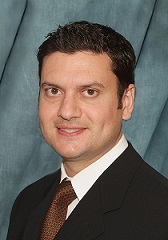 Vishal Mehta, MD, Fox Valley Orthopedic Institute (Geneva, Ill.): To me it is clearly in improving communication between orthopedic surgeons and patients. We are currently being asked the impossible as physicians. See more patients while at the same time improving patient communication and satisfaction scores and outcomes. How are we going to meet this challenge?
Vishal Mehta, MD, Fox Valley Orthopedic Institute (Geneva, Ill.): To me it is clearly in improving communication between orthopedic surgeons and patients. We are currently being asked the impossible as physicians. See more patients while at the same time improving patient communication and satisfaction scores and outcomes. How are we going to meet this challenge?
I have spent much time on this issue over the past few years. Four years ago I recognized this huge problem that happens multiple times to each of us every day:
I see a patient, let's say a 14 year old girl comes into the office with her mother. I review her MRI and diagnose an ACL rupture and recommend surgery. Immediately I can see their eyes glaze over, they are worried about many other things, unable to concentrate. I then talk as fast as I can for the next three minutes and push them out the door with six months of post-operative information in an envelope.
The consequence is predictable, a dissatisfied, confused patient, call backs to the office, a dissatisfied doctor and poor compliance that leads to poor outcomes.
Today we can record our conversation with patients in a HIPPA compliant fashion that the patient can access on demand and share with friends and family. In addition, they can enter their surgery date into the system and receive via text message the right nuggets of information at the right time points in their recovery, rather than an information overload of 100 pages a month before their procedure.
This benefits everyone. Leveraging technology to help us practice more efficiently and help educate our patients and their families will transform what we do and allow us to meet the seemingly impossible challenge of seeing more patients while improving satisfaction/care.
Again this has been a passion of mine and you can see more at www.healthy-txt.com.
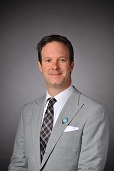 Steven K. Neufeld, MD, The Centers for Advanced Orthopaedics - Orthopaedic Foot & Ankle Center Division (Falls Church, Va.): The most important innovations within the foot and ankle specialty are focused on new and better ways to treat arthritis and chronic tendon injuries and perform total ankle replacements. Bioengineering, and specifically stem cell research, is a key area of growth in this field. For example, we are designing and developing ways to use stem cells to repair damaged tendons and joints. This will have a huge impact on how we treat chronic foot and ankle injuries as well as foot and ankle arthritis.
Steven K. Neufeld, MD, The Centers for Advanced Orthopaedics - Orthopaedic Foot & Ankle Center Division (Falls Church, Va.): The most important innovations within the foot and ankle specialty are focused on new and better ways to treat arthritis and chronic tendon injuries and perform total ankle replacements. Bioengineering, and specifically stem cell research, is a key area of growth in this field. For example, we are designing and developing ways to use stem cells to repair damaged tendons and joints. This will have a huge impact on how we treat chronic foot and ankle injuries as well as foot and ankle arthritis.
Likewise, our implants, plates and screws are stronger, smaller and becoming more and more advanced – influencing the way we reconstruct the foot. Ultimately, these developments are all focused on improving patient care, leading to a faster recovery, better return to function and more long-lasting results for our patients.
Roger Ostrander, MD, Andrews Orthopaedic & Sports Medicine Center at The Andrews Institute (Gulf Breeze, Fla.): One of the biggest opportunities for innovation in the field of orthopedics is the need for post-operative pain management solutions that lessen the use of narcotics. No one disputes that opioid abuse is a problem, but what people may not know is that it can start in a post-surgical setting. Until recently, post-surgical pain was primarily treated with opioids, which may cause undesirable side effects including post-operative nausea and vomiting, sedation and pose the risk of dependence and addiction. A New York City Department of Health study (reported in JAMA in June 2013) found that newly prescribed opioids after short-stay surgery are associated with a 44 percent increase in risk of becoming a long-term opioid user within one year. The abuse of painkillers is becoming an epidemic and it is imperative that physicians and patients explore alternatives to narcotics for pain management, especially in a post-surgical setting. One of the greatest advancements in terms of effective outpatient surgeries has been to manage post-operative pain with regional anesthesia.
We at the Andrews Orthopaedic & Sports Medicine Center at The Andrews Institute, in order to help reduce the side effects of narcotics, use a non-narcotic option such as nerve blocks, to help control post-operative pain. We perform continuous peripheral nerve blocks, which greatly assist patients with their pain management and the benefits of nerve blocks utilizing regional anesthesia are high, specifically with the ON-Q Pain Relief System. The ON-Q Pain Relief System is a non-narcotic pain relief pump that reduces post-surgical pain for up to two to five days by delivering an automatic and continuous, regulated flow of a local anesthetic through a specially designed catheter inserted near the surgical site or in close proximity to nerves. Patients have fewer narcotic-related side effects and a faster early recovery when compared to narcotics alone.
Unfortunately, patients – and often clinicians – aren't as aware as they should be regarding the options that are available to them when it comes to alternatives to opioids for post-operative pain control. Surgeons and anesthesiologists need to remain current on the most advanced pain control options so that they can offer their patients the best options for their pain management – including regional anesthesia
 Andrew Pedtke MD, San Jose (Calif.) Regional, staff orthopedic surgeon: As orthopedic surgeons, we work with more medical devices than most healthcare professionals. Innovation is engrained within our DNA, as many of us are natural handymen and handy-women. The internists chide us orthopods for never using a stethoscope, but that instrument represents a fraction of the implants, diagnostics, and biologics that we come in contact with throughout our training and well into our practicing careers. I see three specific areas where we as orthopedic surgeons can utilize our innovative minds to improve health care.
Andrew Pedtke MD, San Jose (Calif.) Regional, staff orthopedic surgeon: As orthopedic surgeons, we work with more medical devices than most healthcare professionals. Innovation is engrained within our DNA, as many of us are natural handymen and handy-women. The internists chide us orthopods for never using a stethoscope, but that instrument represents a fraction of the implants, diagnostics, and biologics that we come in contact with throughout our training and well into our practicing careers. I see three specific areas where we as orthopedic surgeons can utilize our innovative minds to improve health care.
1. Don't be afraid to look outside of our own fields. In many ways, I suggest we use that sound understanding of medical devices to help develop areas outside of orthopedics. Many of our implants and tools have been refined over and over to the point that they go beyond the basic un-needs of the patient and are "over-engineered." Despite being a practicing orthopedist, I found my way into the prosthetics and orthotics space through a prosthetist colleague looking for help with new socket technology for amputees. Realizing that not all areas of medicine undergo technological advancement equally or at the same pace, I quickly understood that custom fabrication of prosthetic sockets is an area that could use major advancement and pursued an entrepreneurial endeavor to meet this demand.
2. Anything that facilitates gathering large outcomes data and refining it to simple methods of analysis and tools for use is going to become more critical. It goes without saying that clinical outcomes are a hot topic in health care today, and orthopedics as a field could use a significant amount of help in defining which of its treatments is more or less effective.
3. Finally, as academia has parted further and further from industry from a conceptual standpoint, this makes innovation more and more difficult. The intellectual property, marketing and sales development that occurs outside of the formal research setting couldn't seem further apart. My urging here is not a specific unmet need, but rather a call to have better collaboration of entrepreneurial efforts within academic institutions.
Gregory D. Schroeder, MD, Rothman Institute (Philadelphia): Over the last ten years there have been substantial improvements in the manufacturing of different metals as well as ultra-high-molecular-weight polyethylene, and these advances have allowed for improved implant fixation and survival. However, moving forward, the biggest opportunity for advancement in orthopedics is not with improvements in mechanical engineering, but rather in regenerative medicine.
At Thomas Jefferson University, Christopher Kepler, MD, is working with mesenchymal stem cells to determine if they can help reverse the degenerative process in intervertebral discs, and while the transition from using stem cells in the research laboratory to actual patient care may seem onerous, the work by Drs. Grudon and Yamanaka, who won the 2012 Nobel Prize in Physiology or Medicine for demonstrating that mature adult cells can be reprogrammed into immature pluripotent stem cells, will lead to a rapid advancement in the field.
The ability to induce adult somatic cells into becoming pluripotent stem cells eliminates the ethical and immunologic considerations with the use of embryonic stem cells, and utilizing this discovery, physician scientists may soon be able to harvest cells from a patient’s skin and manipulate these cells such that the patient's own articular cartilage can be grown and implanted in a large osteochondral defect. Similarly, these cells can be manipulated into progenitor cells of the central nervous system, which may be used to improve the recovery of patients with spinal cord injuries. Currently scientists have only begun to explore regenerative medicine, and induced pluripotent stem cells may allow for significant improvements to patient care in the near future.
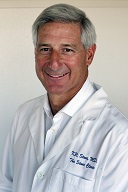 Kevin R. Stone, MD, The Stone Clinic (San Francisco): The most novel device coming to market is the humanized pig tissue being released for ACL reconstruction in Europe called the Z-Lig. The process used strips away the antigens from animal tissue and can be applied to not just ligaments, but tendon, bone, skin patches, heart valves and cartilage to name a few. See www.aperionbiologics.com
Kevin R. Stone, MD, The Stone Clinic (San Francisco): The most novel device coming to market is the humanized pig tissue being released for ACL reconstruction in Europe called the Z-Lig. The process used strips away the antigens from animal tissue and can be applied to not just ligaments, but tendon, bone, skin patches, heart valves and cartilage to name a few. See www.aperionbiologics.com
Dr. Charles Theofilos, neurosurgeon, The Spine Center (Palm Beach, Fla.): Human neural stem cell therapy offers a 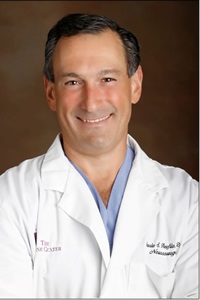 promising new approach for the preservation or restoration of cellular function that could fundamentally alter the treatment of neurodegenerative diseases and injuries to the brain or nervous system. Recently researchers have developed toxin-secreting stem cells to treat certain brain tumors. These stem cells are loaded with a tumor killing herpes virus which produce and secrete tumor-killing toxins. Furthermore, stem cells are also being shown that if cultured in a hydrogel they can migrate to damage neural tissue and differentiate into oligodendrocytes or neural cells which then can secrete neuroprotective factors to lessen the extent of neural damage – stroke and traumatic brain injury.
promising new approach for the preservation or restoration of cellular function that could fundamentally alter the treatment of neurodegenerative diseases and injuries to the brain or nervous system. Recently researchers have developed toxin-secreting stem cells to treat certain brain tumors. These stem cells are loaded with a tumor killing herpes virus which produce and secrete tumor-killing toxins. Furthermore, stem cells are also being shown that if cultured in a hydrogel they can migrate to damage neural tissue and differentiate into oligodendrocytes or neural cells which then can secrete neuroprotective factors to lessen the extent of neural damage – stroke and traumatic brain injury.
Stem cells are also being explored for the treatment of many spine conditions. Currently research is being done with the use of stem cells for the treatment of spinal cord injury. Also, stem cells, including those from bone marrow aspirate, are being used to attempt to regenerate degenerative discs and regrow cartilage in osteoarthritic facet joints. Current research has revealed a specialized protein found in our blood, Alpa-2-macroglobulin, that can be purified and then introduced to degenerative discs and arthritic joints to attempt to neutralize the destructive proteases and cytokines. The above advancements with stem cells is very promising in the treatment of central nervous system (CNS) disorders.
James M. Weiss, MD, orthopedic surgeon, Society of Physician Entrepreneurs member (Chevy Chase, Md.): The most salient opportunities in orthopedics come from both sides of the equation; that is the cost side and the revenue side. From the cost side, tissue engineering offers the greatest potential for improving patient care with better short and long term outcomes. The focus in this area has been in spine and sports medicine. The ability to address disc disease, from herniations to degenerative disease through biologics, with cellular therapeutics to novel biomaterials, has a tremendous yield curve for addressing large populations of patients with less intensive and less invasive remedies then are now presently available. This applies equally to the realm of sports medicine where rotator cuff disease, meniscal pathology and anterior cruciate injuries continue to challenge clinicians seeking to offer patients a better answer for returning them to their pre-injury level of performance.
From the revenue side, one area of attention has been on cost-sharing initiatives. These range from improving case mix and optimizing inpatient episodes of care into improved length of stay to migrating cases to lower cost facilities such as outpatient centers. Other areas which have drawn significant scrutiny include bundled payment arrangements, particularly for high volume/high cost procedures such as total joint replacement that lend themselves to algorithmic approaches and spinal fusions and trauma where expensive, commoditized implants tend to drive costs.
Jeffrey Yormak, MD, FAAOS, Somers Orthopedic Surgery & Sports Medicine (Mount Kisco, N.Y.): Across America, the past 30 years have seen a tremendous surge of participation in sports and other high demand activities for every age group and gender. Simultaneously, great strides in orthopedic therapeutic techniques and surgical procedures have helped people to continue participation in their chosen activity, even after significant lower extremity injuries such as ACL tear, meniscus tear or fracture have occurred. A large and rapidly growing group of relatively young and otherwise healthy people now suffer from progressive arthritic knee pain that has not responded to standard treatment after years of joyful participation in their highly active lives. These people now find themselves faced with a decision to undergo total knee replacement Surgery or the unfortunate fate of reducing or even giving up many or all of their life's passions due to a painful, swollen or unstable knee. A glaring void in the orthopedic treatment armamentarium has become evident for the person that wants to remain active and yet, wants to avoid the use of chronic medication and is not yet ready for knee replacement surgery.
AposTherapy is a cutting edge technology that has been painstakingly researched over the past 10 years, clinically tested and proven to work. It fills a void in treatment that exists for active people with persistent joint pain. We have learned over time that as arthritis progresses a patient’s joint alignment worsens, changing the way they walk and the muscles they use. The abnormal gait that develops (the minds attempt to protect you from pain) actually aggravates the problem. AposTherapy reverses this process. A state of the art gait analysis lab is combined with a thorough, clinical evaluation by a certified, uniquely trained, AposTherapist.
A detailed analysis of the pressures through each part of the leg, your balance, body tilt, stride length, leg strength and even your confidence in walking are tested and organized using a proprietary computer algorithm to round out a dynamic picture of each person's unique injury and gait problem. This information is then used to attach a pair of convex pods to a platform on the base of a foot-worn biomechanical device that reduces the load going through the painful areas of your joint while simultaneously re-training your neuromuscular system (your muscles and brain) to promote proper gait patterns while you walk. The specially designed AposTherapy devices are worn on the feet for an hour or so each day to retrain your neuromuscular system. Periodic returns to the AposTherapist for repeat gait analysis are performed to reposition the pods to steadily improve the strength and stability of your leg without pain. Simply walking with the AposTherapy foot-worn devices for a short period daily is your therapy. No medicine, no surgery. Minimal time required. State of the art treatment customized to you.


